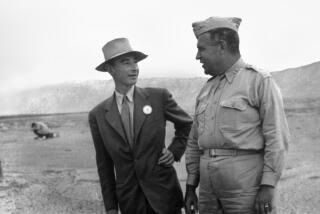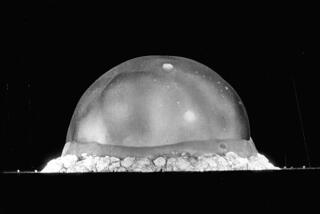MIT’s Jerrold Zacharias, Nuclear Physicist, Dies at 81
CAMBRIDGE, Mass. — Jerrold R. Zacharias, a nuclear physicist who advocated establishing a federal student loan bank and urged reforms in the teaching of physics to make that science better understandable to American high school students, has died at the age of 81.
Zacharias, who died Wednesday at his Belmont, Mass., home, headed the engineering division of the Manhattan Project that developed the atomic bomb in World War II.
He also supervised research into the radio frequency spectra of atoms that led to the development of the atomic clock. The Massachusetts Institute of Technology, where he worked and taught most of his life, announced his death.
A native of Jacksonville, Fla., Zacharias studied at Columbia University, where he received his doctorate in 1932. He taught at Hunter College until 1940 while doing research in the molecular beam laboratory at Columbia.
He joined MIT’s radiation laboratory in 1940 to head the division on radar transmitting components and later became director of the Laboratory for Nuclear Science, which he headed for 10 years.
In 1946, he set up a laboratory at MIT to continue his radio frequency spectra research, which resulted in the development of the first useful atomic frequency standard.
He developed the atomic clock from the theories of Dr. I. I. Rabi, a Nobel Prize-winning physicist. The clock is capable of keeping time for centuries without gaining or losing more than a few seconds.
Zacharias was chairman of a 1967 select White House panel that recommended establishment of a federal bank to finance all education costs for qualified students with repayments stretched over 30 to 40 years at minimal interest. The plan--fought by the National Assn. of State Universities and Land Grant Colleges because of the lengthy indebtedness involved--failed to attract wide-ranging support.
Concerned about how physics was taught in schools, Zacharias formed the Physical Science Study Committee in 1956, which developed a new program that was being used by more than 200,000 students in 5,000 schools by 1970.
Convinced that high school students could be intrigued by the simplest principles of physics, Zacharias’ committee advocated the use of basic experiments with simple devices to inspire student interest.
He once said that given a choice of “a football coach who really likes kids and a stuffed owl with a Ph.D., I’ll take take the football coach (to teach physics) every time.”






